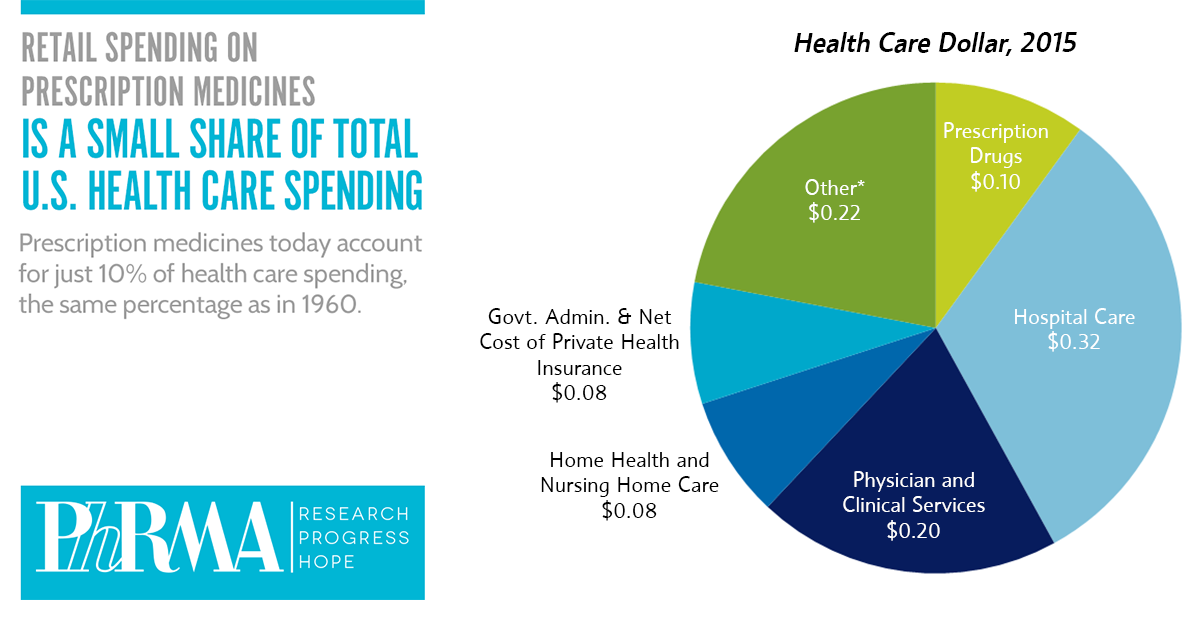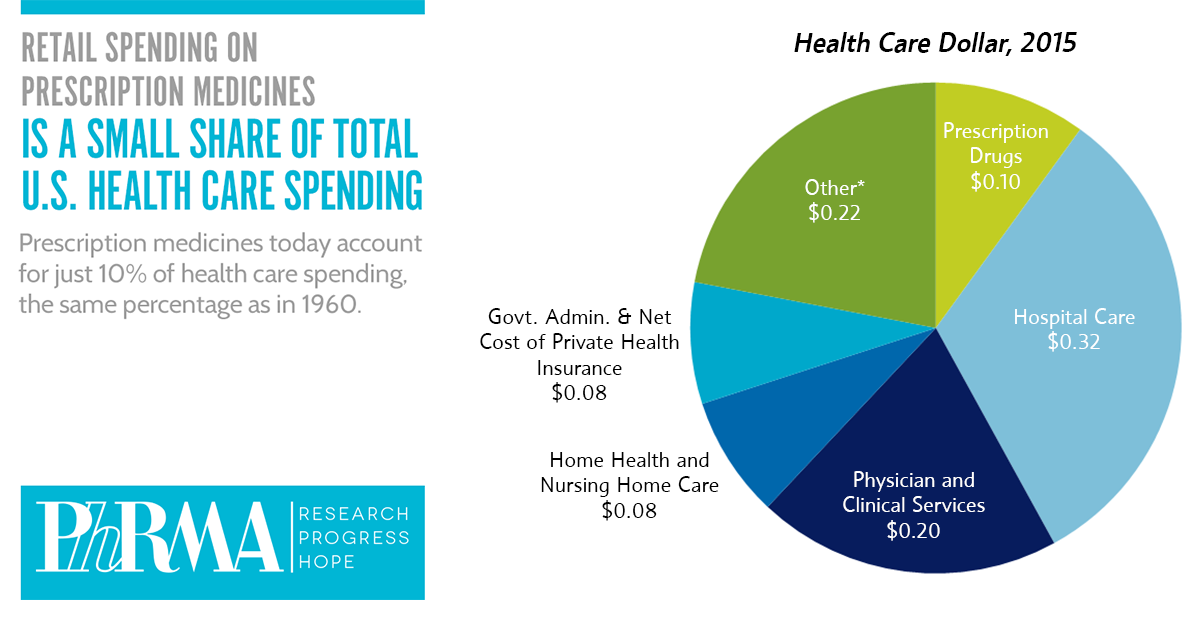New National Health Expenditure (NHE) projections released today by the Centers for Medicare & Medicaid Services reaffirm how our nation’s competitive marketplace for medicines controls costs while supporting the development of new treatments and cures for patients.
The NHE data project spending on prescription medicines will grow an average of 6.7 percent per year from 2016 through 2025 – roughly in line with overall health care cost growth – and despite the expected introduction of many new first-in-class therapies. This is possible due to a competitive marketplace for medicines where large, powerful purchasers negotiate aggressively and generic utilization rates are nearly 90 percent. To put this in context, between 2016 and 2025, hospital and physician service expenditures are projected to increase by nearly a trillion dollars, more than four times the cumulative projected growth in retail prescription drug spending.

Even with new treatments for hepatitis C, high cholesterol and cancer, spending on retail prescription medicines is projected to remain approximately 10 percent of U.S. health care spending through 2025 – the same percentage as in 1960. This share of health care spending going toward medicines is providing tremendous value for patients and the health care system. For example:
- The U.S. cancer death rate has fallen 23 percent since its peak.
- New hepatitis C therapies cure more than 90 percent of treated patients.
- The death rate from cardiovascular disease has dropped 46 percent since 1991.
- Patients now have access to insulins that operate at the molecular level to function more like normal human insulin.
This progress underscores the need to maintain an ecosystem that fosters the development of tomorrow’s cancer treatments and cures. As our health care market continues to evolve, we need to concentrate on patient-centric policies to enhance the private market and address costs holistically.
View PhRMA’s policy solutions for delivering innovative treatments to patients at http://phrma.org/sites/default/files/policy-solutions.pdf.
Learn more about the cost and value of medicines at www.phrma.org/cost.




